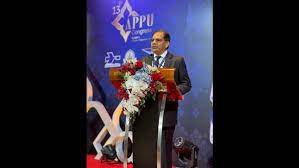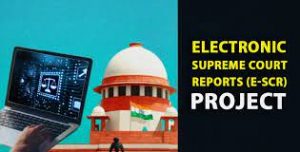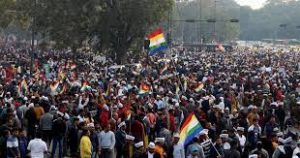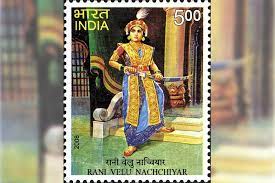Today’s Current Affairs: 5th January 2023 for UPSC IAS exams, State PSC exams, SSC CGL, State SSC, RRB, Railways, Banking Exam & IBPS, etc
Table of Contents
Asian Pacific Postal Union : India To Take Over Leadership

India is set to take over leadership of the Asian Pacific Postal Union after successful elections held during the 13th Congress held in Bangkok.
- Dr Vinaya Prakash Singh, erstwhile Member (Personnel) of, the Postal Services Board will take over the charge of Secretary General of the Union for a tenure of 4 years.
- Asian Pacific Postal Union (APPU) is an intergovernmental organization of 32 member countries of the Asian-Pacific region.
- It is the only Restricted Union of the Universal Postal Union (UPU) in the region, which is a specialized agency of the United Nations.
- Goal is to extend, facilitate and improve postal relations between member countries and to promote cooperation in the field of postal services.
- As the regional centre for various UPU projects, it also takes the lead in ensuring that all technical and operational projects of the UPU are fulfilled in the region so that the region is integrated into the global postal network in the best possible way.
- The APPU is made up of the three bodies
- Congress: It is the supreme organ of the Union and meets not later than 2 years after the UPU congress
- Executive Council: It comprises all members and meets every year to ensure the work of the union.
- APPU Bureau: It serves as a body for liaison, information, inquiry and training for members.
e-SCR Project:

Electronic Supreme Court Reports (e-SCR) project has been launched to provide the digital version of the SC’s judgements in the manner as they are reported in the official law report ‘Supreme Court Reports’
- The report aims to provide the entire judgement of SC from inception in 1950 to date.
- The eCourts Mission Mode Project is a national eGovernance project for Information and Communication Technology (ICT) enablement of district & subordinate courts of the country.
- The objective of the project is to provide designated services to litigants, lawyers and the judiciary through ICT enablement of courts.
Protests Of The Jain Community:

Members of the Jain community have been staging protests across the country for the past two weeks over demands related to two holy sites — Sammed Shikhar on Parasnath hill in Jharkhand and Shetrunjay hill in Palitana of Gujarat.
- In Jharkhand, the issue is about Parasnath hill being declared a tourist spot and an eco-sensitive zone, neither the Centre nor the state consulted the main stakeholder
- In Gujarat, the row is over the vandalising of a shrine and related security concerns, the Jains are demanding that Shetrunjay hill and the area around it be protected so as to maintain its holiness.
- They also want further probe into the vandalism case.
Sammed Shikharji Temple:
- It is believed that 20 out of 24 Tirthankars (Jain spiritual leaders) attained salvation at Sammed Shikharji.
- Sammed Shikharji, located on the Parasnath Hills in the Giridih district of Jharkhand, is the biggest pilgrimage of the Jain community.
- It is important for both the Digambara and Swethambara sects of Jainism.
- The hill is known to be the highest mountain in Jharkhand.
- The Hill is named after Parasnath (the 23rd Tirthankar)
Shetrunjay hill:
- Situated on the banks of the Shetrunji river around 164 feet above sea level, Shetrunjaya Hills near Palitana city are home to 865 Jain temples and are a holy place for Shwetambara Jains.
50 Years Of The Stockholm Conference:

“Stockholm+50: A healthy planet for the prosperity of all — our responsibility, our opportunity” was held in the year 2022 to mark the 50 years of the Stockholm Conference
- “Stockholm+50: A healthy planet for the prosperity of all — our responsibility, our opportunity” was held in the year 2022 to mark the 50 years of the Stockholm Conference ( Report of United Nations Conference on the Human Environment).
About Stockholm Conference, 1972:
- This was the first global convergence on the planetary environment and natural resources.
- Also termed the “Swedish Initiative”, the idea of the Stockholm Conference was first proposed by Sweden.
- The theme was ‘Only One Earth’.
- Stockholm Declaration is to :
- build the “interconnections between development, poverty and the environment”.
- Action Plan for the Human Environment
- Global Environmental Assessment Programme (watch plan)
- Environmental management activities
- International measures to support assessment and management activities carried out at the national and international levels.
- The Stockholm Conference of 1972 put environmental issues on the global agenda for the first time.
Rani Velu Nachiyar : Birth Anniversary

The Prime Minister of India paid tributes to Rani Velu Nachiyar on her birth anniversary.
- Rani Velu Nachiyar was born on January 3, 1730, in Ramanathapuram, Tamil Nadu, India.
- She was the first queen to have ever actively opposed British rule and fought against colonial rulers many years before the Sepoy Mutiny.
- She was trained in war to match weapons usage, martial arts like Valari, Silambam (fighting using the stick), horse riding and archery.
- She was a scholar in many languages and she had proficiency in languages like French, English and Urdu.
- She married the king of Sivagangai named Muthuvaduganathaperiya Udaiyathevar, with whom she had a daughter.
- When her husband was killed by British soldiers, she was drawn into battle.
- War against the British: In collaboration with Hyder Ali and Gopala Nayaker, she waged a war against the British and emerged victoriously
- She granted powers to the Marudu brothers to administer the country in 1780.
Centrally Protected Monuments : Report

The Ministry of Culture reported to Parliament that 50 of India’s 3,693 centrally protected monuments were missing.
- The Ministry of Culture mentioned in its report titled ‘Issues relating to Untraceable Monuments and Protection of Monuments in India’ which was submitted to the Parliamentary Standing Committee on Transport, Tourism and Culture.
Centrally Protected Monuments:
- The Ancient Monuments and Archaeological Sites and Remains Act (AMASR Act) 1958 regulates the preservation of monuments and archaeological sites of national importance.
- The Act protects monuments and sites that are more than 100 years old, including temples, cemeteries, inscriptions, tombs, forts, palaces, step-wells, rock-cut caves, and even objects like cannons and mile pillars that may be of historical significance.
- The Archaeological Survey of India (ASI), which is under the aegis of the Union Ministry of Culture, functions under this Act.
- ASI was founded in 1861 by a British Army engineer Alexander Cunnigham who is also known as the ‘Father of Indian Archaeology’.
- It engages in archaeological research and conservation, and protection and preservation of ancient monuments and archaeological sites in the country.
- ASI regulates all archaeological activities conducted in the country through the provisions of the Ancient Monuments and Archaeological Sites and Remains Act (AMASR Act), 1958.
- It also regulates the Antiquities and Art Treasure Act, of 1972.
- ASI has more than 3,693 protected monuments and archaeological sites of National Importance that it protects and preserves.
World Braille Day : January 4

World Braille Day is being observed every year on January 4.
- The day commemorates the birth anniversary of French educator Louis Braille, who invented the Braille language in the year 1809.
- Louis Braille developed the Braille system by modifying Charles Barbie’s Night Write system.
- The first Braille system was published in 1829 – and was adopted by the National Institute for Blind Youth.
- It is observed to raise awareness about the importance of Braille as a means of communication in the full realisation of the human rights of the visually impaired and partially sighted people.
- The day was recognised in 2019 by the United Nations.
- The Braille system, which is based on a series of raised dots that can be read with the fingertips, has given millions of people who are blind or visually impaired the ability to read and write, and has greatly increased their independence and ability to participate fully in society.
First Known “Virovore : Organism That Eats Virus

Researchers have found the first known “Virovore,” or organism that eats viruses.
- The new findings may change our understanding of the role viruses play in the food chain at a microscopic level.
- Virovore has been identified as an actual species of protist that feasts on viruses.
- These virus-eating species of protists — which are their own kingdom on the tree of life and are not an animal, plant, or fungi are now classified as Virovores.
- It is a species of Halteria ,microscopic ciliates that populate freshwater worldwide.
- The microbe Halteria is a common genus of protist known to flit about as its hair-like cilia propel it through the water.
- They’re made up of nucleic acids, nitrogen, and phosphorus.
- It can eat huge numbers of infectious chloroviruses that share their aquatic habitat.
- Chloroviruses are known to infect microscopic green algae.
- These organisms can sustain themselves with viruses, consuming many and growing in size.
- A virus-only diet, termed “virovory,” is enough to fuel the physiological growth and even population growth of an organism.
Kalasa-Banduri Nala Project:

On December 30, 2022, Karnataka Chief Minister Basavaraj Bommai told the Legislative Assembly that the government had received clearance from the Centre for two Detailed Project Reports (DPRs) on the Kalasa-Banduri Nala on the Mahadayi.
- It has escalated its long-standing dispute on the issue with neighbouring Goa.
- The Kalasa Banduri Nala project aims to divert water from Mahadayi to satisfy the drinking water needs of Belagavi, Dharwad, Bagalkot and Gadag districts.
- Though the project was first proposed in the early 1980s, it has remained on paper owing to a dispute between Karnataka, Goa and Maharashtra.
- As per plans, barrages are to be built against Kalasa and Banduri streams tributaries of Mahadayi and water diverted towards Karnataka’s parched districts.
- Mahadayi originates inside the Bhimgad Wildlife Sanctuary in the Belagavi district of Karnataka and flows into the Arabian Sea in Goa.
- A Tribunal was set up by the UPA government in November 2010.
- The Tribunal in 2018 awarded 13.42 TMC water from Mahadayi river basin to Karnataka, 1.33 TMC to Maharashtra and 24 TMC to Goa.
- In Karnataka’s share, 5.5 TMC was to meet drinking water needs and 8.02 TMC was for hydro-electricity generation.
- Of the 5.5 TMC, 3.8 TMC was to be diverted to Malaprabha basin through Kalasa and Banduri Nalas (canals).
- This was notified by the Central government in February 2020.
Draft Regulation For National Exit Test:

The National Medical Commission (NMC) issued the proposed draft regulations related to the National Exit Test (NExT).
Objective of the Regulation:
- To provide consistency across the nation in the summative evaluation with regard to the minimum common standards of education and training for a medical graduate.
- The objective of the NExT is to improve the quality of healthcare in India by ensuring that all doctors have a minimum level of competency and knowledge before they begin practicing medicine.
- The NExT is a medical licensing exam that is designed to assess the competency of medical graduates.
- Students who received their medical degrees from NMC approved medical institutions and overseas students also will have to qualify the National Exit Test.
- To register for medical practice in India, they must pass the NExT test.
- This centralized common exam will be conducted by a body formed by the commission for this purpose.
- National Medical commission (Amendment) Bill,2022, proposes an autonomous board, ‘Board of Examinations in Medical Sciences’, which, when comes to effect, will be responsible for holding the NExT exam.
- Currently, the National Board of Examinations in Medical Sciences (NBEMS) is responsible for holding exams like NEET PG (National Eligibility cum Entrance Test Postgraduate), Foreign Medical Graduate Examination (FMGE).
- NExT will take the place of tests like FMGE and NEET PG.
- The NExT will comprise two separate exams called ‘Steps’.
Supreme Court’s Verdict On Demonetisation:

The Supreme Court has passed a verdict on the Demonetisation of currency notes of Rs 500 and Rs 1,000 in a majority 4-1 by a five-judge Constitution Bench.
Majority Ruling:
- The majority held that Centre’s notification dated November 8, 2016 is valid and satisfies the test of proportionality.
- The RBI and the Centre had been in consultation with each other for six months prior to the November 8 notification issued under Section 26(2) of the RBI (Reserve Bank Of India) Act, 1934.
- The statutory procedure under Section 26(2) of the RBI Act was not violated merely because the Centre had taken the initiative to “advice” the Central Board to consider recommending demonetisation.
- The government was empowered under the provision to demonetise “all series” of banknotes.
- On hasty decision, the court said such measures undisputedly are required to be taken with utmost confidentiality and speed.
- If the news of such a measure is leaked out, it is difficult to imagine how disastrous the consequences would be.
- Demonetisation was done for the “proper purposes” of eliminating fake currency, black money and terror financing.
Minority Ruling:
- The government could have issued a notification under Section 26(2) of the RBI Act only if the RBI had initiated the proposal to demonetise by way of a recommendation.
- Therefore, the government’s notification issued under Section 26(2) of the RBI Act was unlawful.
- In cases in which the government initiates demonetisation, it should take the opinion of the RBI. The opinion of the Board should be “independent and frank”.
- If the Board’s opinion was in the negative, the Centre could still go forward with the demonetisation exercise, but only by promulgating an ordinance or by enacting a parliamentary legislation.
- Describing the Parliament as the “nation in miniature”, “without the Parliament, democracy will not thrive”.
Demonetisation:
- On 8th November 2016, the government announced that the largest denomination of Rs 500 and Rs 1000 were demonetised with immediate effect ceasing to be a legal tender.
- It is the act of stripping a currency unit of its status as legal tender or fiat money.
- It occurs whenever there is a change of national currency and the current form or forms of money is pulled from circulation and retired, often to be replaced with new notes or coins.




